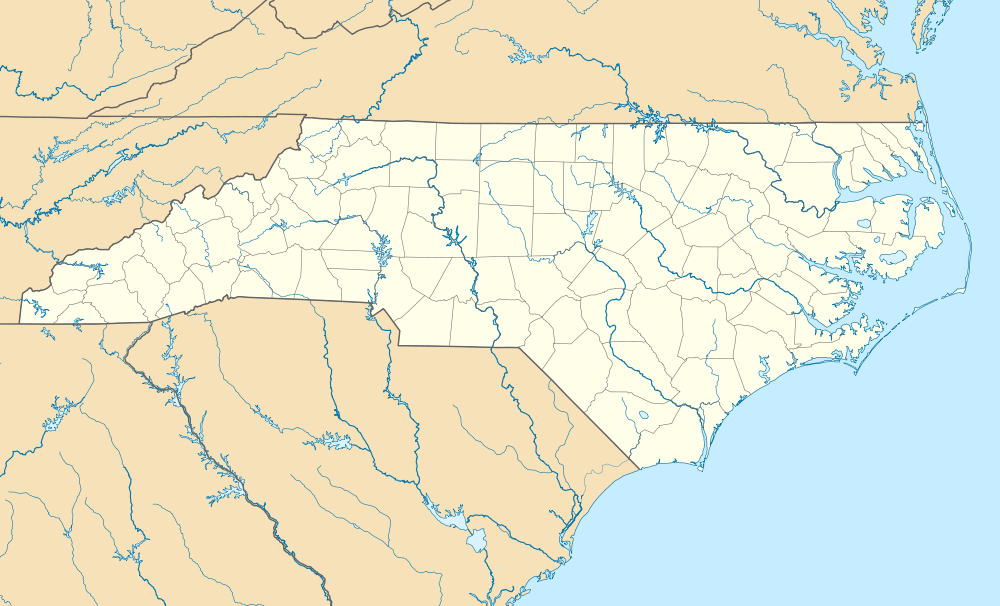Greenville Tobacco Warehouse Historic District
Greenville Tobacco Warehouse Historic District is a national historic district located at Greenville, Pitt County, North Carolina. The district encompasses seven contributing buildings and one contributing structures in an industrial section of Greenville. It includes buildings dated from about 1905 to 1947 and notable examples of Art Deco and Italianate style industrial architecture. Contributing resources are the American Tobacco Company Storage Warehouse #2. (c. 1905); the Prichard-Hughes Warehouse (c. 1905, with c. 1923 addition); the Dail-Ficklen Warehouse (c. 1911, with c. 1923, 1947, and 1963 additions); the Export Leaf Factory (1914, with 1928, 1932, and 1938 additions); the E. B. Ficklen Factory (c. 1916, with additions c. 1923, c. 1925, c. 1945, and c. 1950); the Gorman Warehouse (1927); the Star Warehouse (1930); and the System of CSX Railroad Tracks.[2][3]
Greenville Tobacco Warehouse Historic District | |
Greenville Tobacco Warehouse Historic District, September 2014 | |
  | |
| Location | Roughly bounded by Twelfth, Clark, Ficklen, and Washington Sts.; Eleventh St. near Clark St., Greenville, North Carolina |
|---|---|
| Coordinates | 35°36′23″N 77°22′37″W |
| Area | 10.8 acres (4.4 ha) |
| Built | 1905 |
| Architectural style | Art Deco, Industrial Italianate |
| NRHP reference No. | 97000726, 99001450 (Boundary Increase)[1] |
| Added to NRHP | July 17, 1997, November 30, 1999 (Boundary Increase) |
It was listed on the National Register of Historic Places in 1997, with a boundary increase in 1999.[1]
References
- "National Register Information System". National Register of Historic Places. National Park Service. July 9, 2010.
- Betsey Gohdes Baten (January 1997). "Greenville Tobacco Warehouse Historic District" (pdf). National Register of Historic Places - Nomination and Inventory. North Carolina State Historic Preservation Office. Retrieved 2015-02-01.
- Betsy Gohdes-Baten (March 1999). "Greenville Tobacco Warehouse Historic District (Boundary Increase)" (pdf). National Register of Historic Places - Nomination and Inventory. North Carolina State Historic Preservation Office. Retrieved 2015-02-01.

